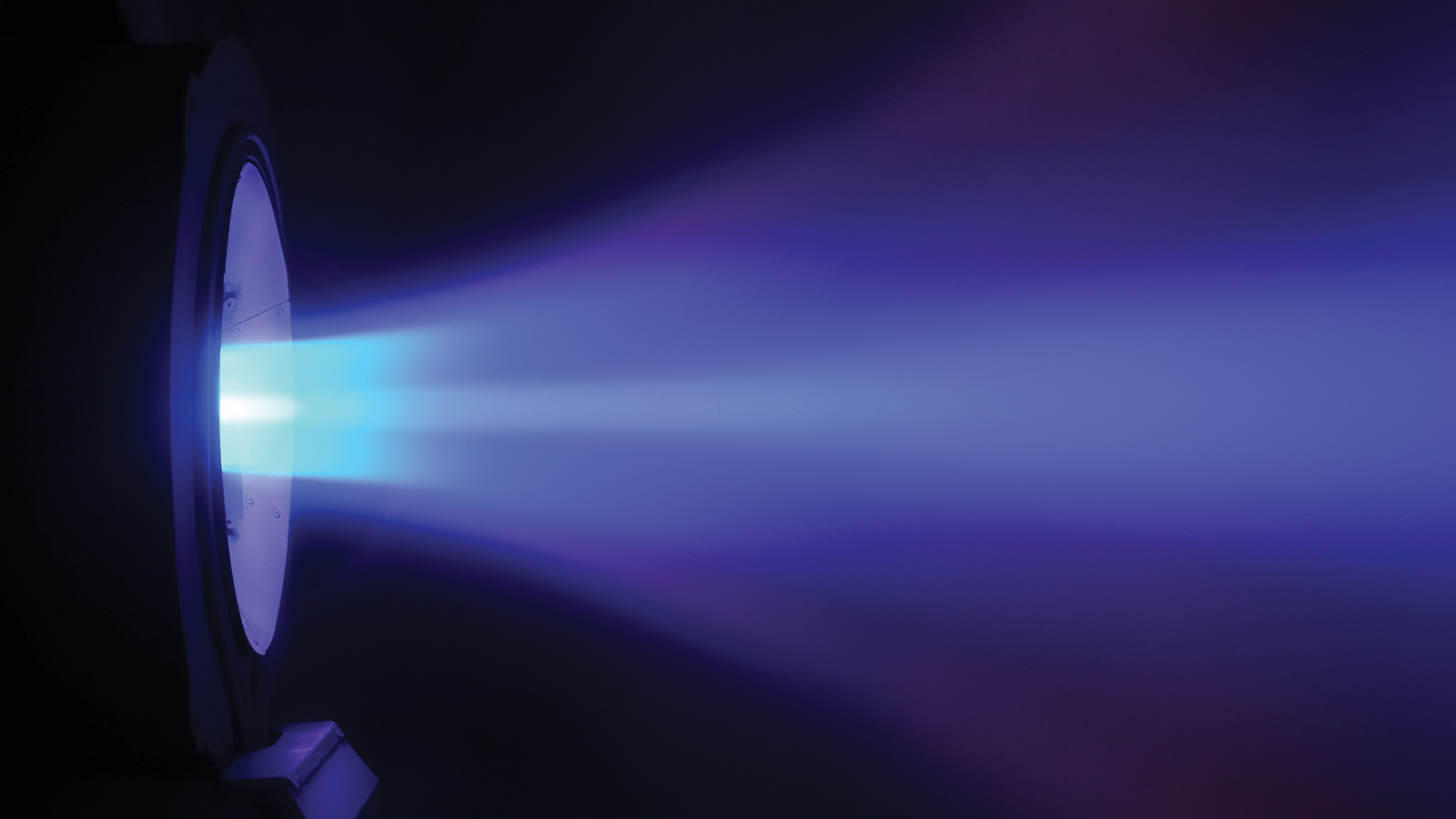Stay Up to Date
Submit your email address to receive the latest industry and Aerospace America news.
The Electric Propulsion Technical Committee works to advance research, development and application of electric propulsion for satellites and spacecraft.
By mid-2020, 900 operational spacecraft were maneuvering with electric propulsion, which accelerates propellants to much higher velocities than possible via chemical reaction. In February, Northrop Grumman’s Mission Extension Vehicle-1 reached geosynchronous orbit propelled by 3-kilowatt Aerojet Rocketdyne XR-5 Hall effect thrusters, allowing it to dock with the Intelsat 901 communications satellite and move it to a new orbital slot where it began a five-year mission extension, all firsts for commercial spacecraft. MEV-2 was launched in August. In March, the U.S. Air Force’s sixth Advanced Extremely High Frequency communications satellite, made by Lockheed Martin, reached geosynchronous orbit where it is propelled by XR-5s for orbital acquisition, station keeping and maneuvering. Japan’s Hayabusa2 spacecraft headed back to Earth from asteroid Ryugu for a Dec. 6 arrival, propelled by four microwave discharge gridded ion engines, which provided 1,275 kilometers per second of velocity change through September.
Back on Earth, many new electric propulsion systems were being developed.
In January, Busek Co. Inc. of Massachusetts delivered its third all-iodine-fueled BIT-3 radiofrequency gridded ion engine system. BIT-3 will fly on multiple spacecraft in deep space and low-Earth orbit. In February, Aerojet Rocketdyne and ZIN Technologies finished testing a NEXT-C flight ion thruster and power processing unit at NASA’s Glenn Research Center in Ohio. The Johns Hopkins University Applied Physics Laboratory in Maryland received delivery of the hardware for NASA’s Double Asteroid Redirection Test mission.
Also in January, Busek began delivering its BHT-350 Hall thrusters for satellite constellations. In February, Busek’s BHT-600 Hall thruster completed a 7198-h xenon duration test at Glenn, demonstrating 1.0 meganewton-seconds of total impulse. Also in February, Safran Aircraft Engines in France finished qualifying the PPS-5000 Hall thruster for 7 meganewton-second missions. Through August, the qualification thruster had accumulated 10.8 meganewton-seconds of total impulse in 11,607 hours. Safran also continued developing its low-power PPS X00 Hall thruster. Through September, Apollo Fusion of California won contracts for its ACE and ACE MAX Hall thruster systems. Through August, endurance testing for its two krypton fueled systems reached 1,000 hours.
NASA’s Jet Propulsion Laboratory in California and various contractors continued preparations for the Psyche mission. In May, critical design reviews were held for the spacecraft and propulsion system, which is based on Fakel SPT-140 Hall thrusters from Russia. JPL also began wear testing the subkilowatt Hall thruster at the heart of its Astraeus Propulsion System for small spacecraft. In August, CU-Aerospace of Illinois delivered a prototype xenon flow controller for Astraeus, and a prototype power processing unit was also fabricated.
Work continued on NASA’s Power and Propulsion Element, which will act as the lunar Gateway’s service module. The Maxar-built vehicle will be propelled by Aerojet Rocketdyne’s Advanced Electric Propulsion System and Busek’s BHT-6000 Hall thrusters. In March, Aerojet Rocketdyne completed a flight-like AEPS power processing unit, and VACCO of California completed a flight-like xenon flow controller.
Low-power electrospray propulsion development continued at a brisk pace, targeting small spacecraft. Accion Systems Inc. of Massachusetts developed its Tiled Ionic Liquid Electrospray thruster chip technology, testing 35 devices through September. In May, Busek’s BET-300-P electrospray thruster passed environmental testing and demonstrated total impulse. Meanwhile, the Plasma and Space Propulsion Laboratory at the University of California in Los Angeles in collaboration with Busek, JPL and the Air Force Research Lab characterized electrospray capillary emission, identifying mechanisms reducing lifetime and performance at some conditions.
Research at the Institute for Space Systems in Stuttgart, Germany, was robust. Early in the year, the institute demonstrated an Inertial Electrostatic Confinement Thruster with an electromagnetic nozzle. In March, it tested a radio frequency helicon plasma thruster as part of the European Union’s Project Discoverer. The institute tested its SX3 applied field magnetoplasmadynamic thruster with a LaB6 cathode. In midyear, it completed endurance and integrated testing of the miniature 5-joule Petrus pulsed plasm thruster. Additional Petrus experiments took place at the European Space Agency’s European Space Research and Technology Center in the Netherlands. Petrus flight hardware was delivered to the University of Rome for the Greencube cubesat.
Related Posts
Stay Up to Date
Submit your email address to receive the latest industry and Aerospace America news.




